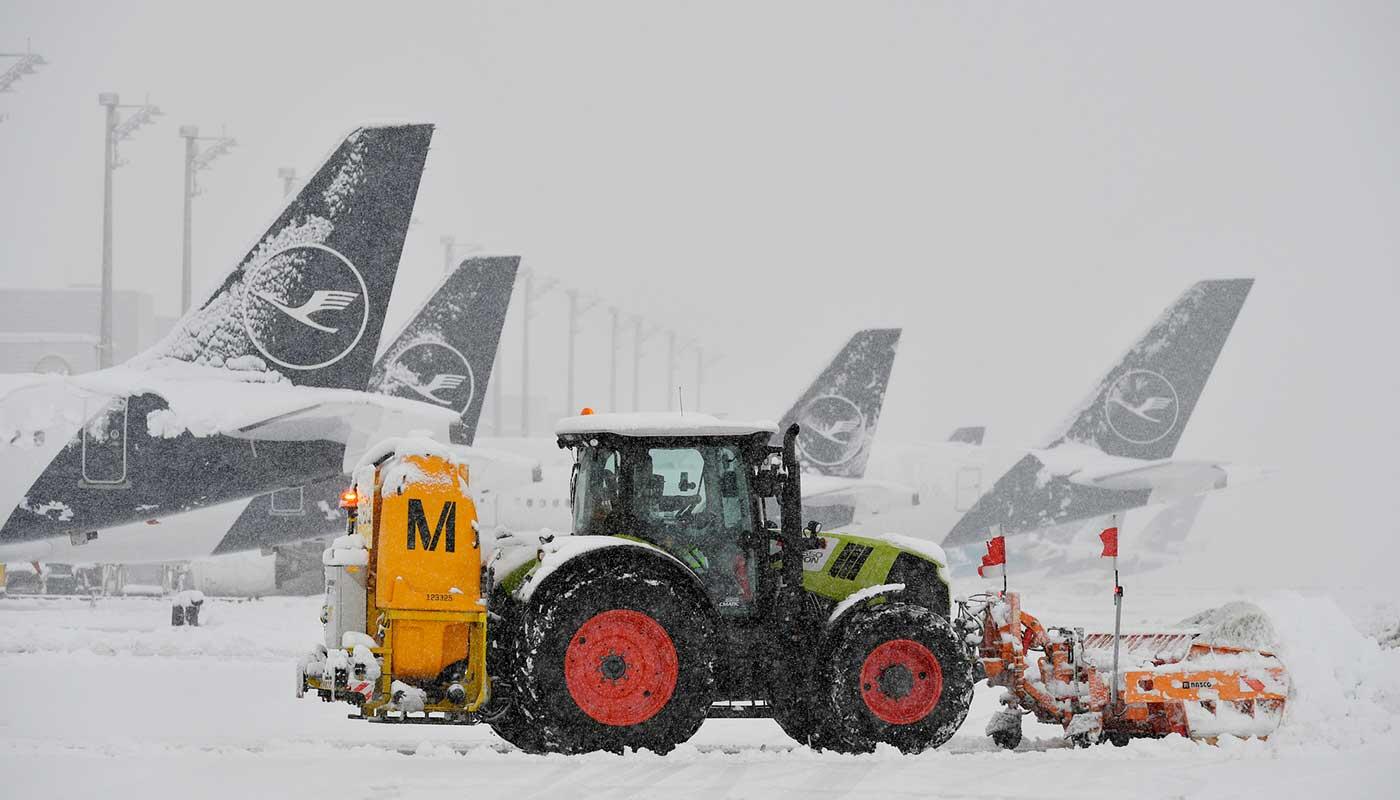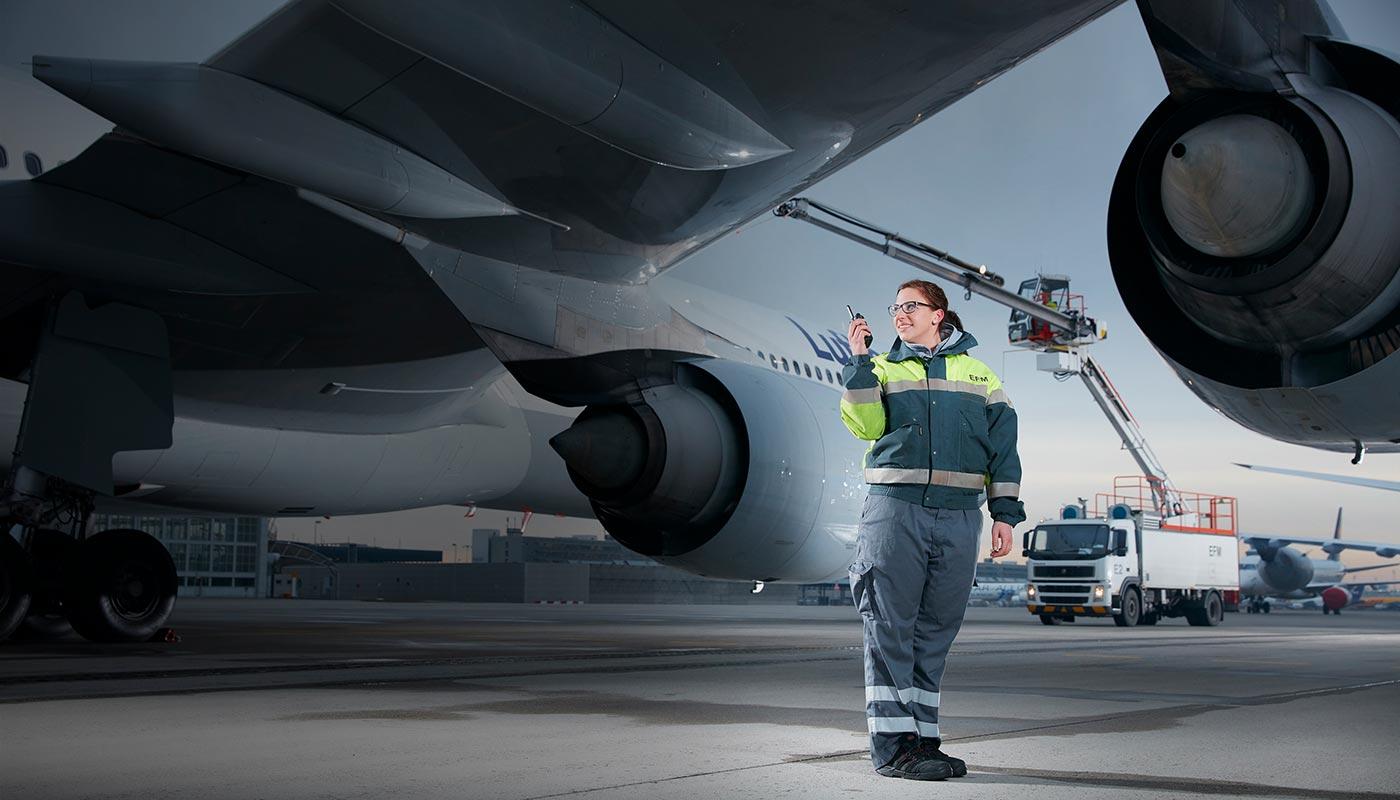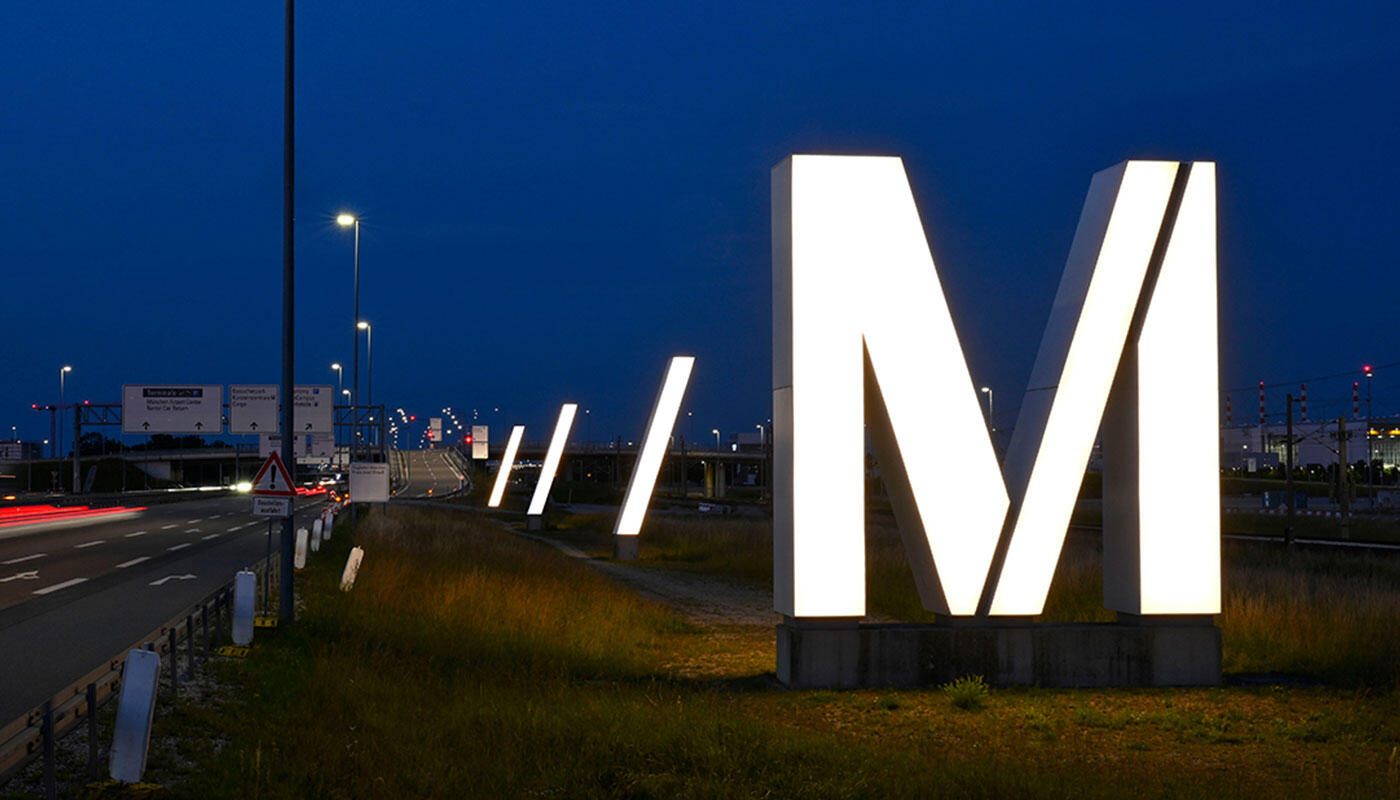October 31, 2025
Keeping operational surfaces clear
In case of snowfall, an essential task of our Winter Services crews is to keep runways free of snow and ice. Unlike cars, aircraft cannot adjust to slippery conditions by taking off and landing more slowly. In addition, the taxiways and aircraft handling areas on the apron need to be ready for use at all times.
De-icing aircraft
Before take-off it is also necessary to perform a thorough de-icing of aircraft. This is done by the "Polar Bears" of EFM, a joint subsidiary of Deutsche Lufthansa and Flughafen München GmbH. Every year they de-ice up to 15,000 aircraft - from Learjets to Airbus A380s.
Prioritizing flights
When harsh winter conditions are expected, airlines can help to alleviate potential problems ahead of time by prioritizing flights and rebooking passengers in advance. That is not always possible, however. After all, weather forecasts are never entirely accurate and conditions can change rapidly.















